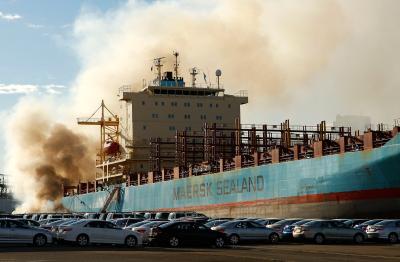Australia has extensive natural resources, including reserves of fossil fuels such as coal, oil and natural gas, and the country is the 14th largest consumer of energy in the world. According to the Australian Petroleum Production and Exploration Association (APPEA), energy consumption in Australia during the 2007-08 reporting period was broken down as follows: coal accounted for 40 percent, oil accounted for 35 percent and natural gas accounted for 19 percent. Renewable energy sources accounted for only 6 percent of energy use in Australia.

According to the Australian Coal Association, “Australia is the world's biggest coal exporter, and black coal is Australia's largest export, worth more than US$46 billion in 2008-09.” Coal mining is concentrated in Queensland and New South Whales, where Australia’s most accessible coal deposits are located. Coal processing accounts for a large portion of Australia’s economy, since 80 percent of Australia’s coal is processed to remove mineral impurities before domestic sale or foreign export. Australia supplies coal markets in more than 30 countries including its biggest markets Japan, Taiwan, India and China. As Australia’s coal deposits have started to deplete, coal mining operations have begun to move away from coastal areas, where the oldest producing mines are located, to more remote inland locations, thereby increasing the cost of Australia’s coal.

Oil is Australia’s second largest export. According to the United States Central Intelligence Agency (CIA), Australia ranks 37th in the world for proved oil reserves with an estimated 1.5 billion barrels of recoverable oil deposits. While North America accounts for 29 percent of worldwide oil demand, Australia consumes only 1 percent of the world’s oil. According to the APPEA, oil production in Australia peaked in 2000 and has been in decline ever since. Australia’s oil industry is privatized and companies drill both onshore and offshore wells. Approximately 100 new exploration wells are drilled in Australia per year. Western Australia, the main oil-drilling region of Australia, produces 70 percent of the country’s oil. Victoria yields 19 percent of Australia’s oil.

Australia’s natural gas industry is growing and the fossil fuel is an increasingly important contributor to Australia’s energy sector. According to the Australian Gas Association (AGA), most of the country’s natural gas is sourced from offshore gas fields and natural gas production has been rising since the 1970s. Natural gas is used in electricity production and as a primary source of fuel in Australian households. According to CDIAC, in 2008 natural gas consumption accounted for over 14 percent of Australia's fossil-fuel carbon dioxide emissions. Australia’s abundant natural gas reserves have attracted lucrative foreign investment deals such as the US$40 billion Gorgon Liquid Natural Gas project. Most of the country’s gas (50 percent) comes from gas fields in the waters off the coast of Western Australia. Victoria gas fields yield 20 percent of Australia’s natural gas and Queensland accounts for 14 percent of natural gas production.
